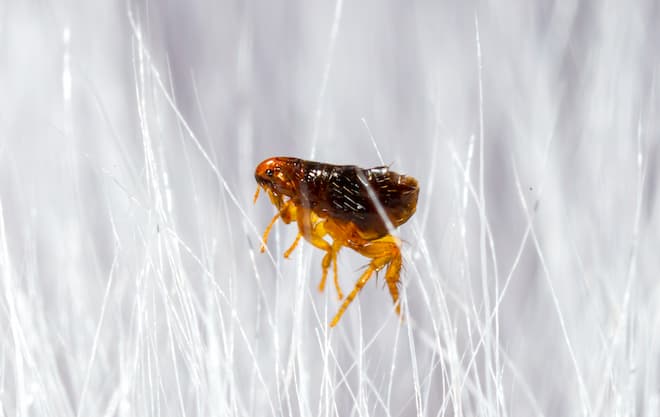Fleas are dangerous parasite that lives on your pet for its survival. The way a flea bite is not a bite like a bed bug or a carpenter ant or a bee or wasp. They have a complex set of mouth parts that include two miniature arms with razor blade-like appendages. They are used for cutting open the skin of the mammal. This is because their hypodermic-like extension is not strong enough to penetrate skin and flesh and must be inserted directly into a vein. This results in a much more painful bite that can look like a red welt. Go through your pet’s fur looking for welts, you will not likely find adult fleas but you may find them tangled with tiny egg sacks. If you need help, contact exterminators in Peterborough.
Humans can be bitten by fleas
Humans can get fleas as well. Like bed bugs, they will bite you while you are asleep and then vacate before you roll over and crush them. An easy way to see if you have fleas aside from the large angry welts they leave is if there are blood spots on your bed sheet. These spots will tell you if you have fleas. Checking your pet’s bed can also help tell if they have fleas. The flea does not drip blood, it takes it all in and then closes the wound. So if you find red spots they are not from the bites but crushed fleas.

Flea life cycle
The flea life cycle starts with an egg, three instar transformations take place before the flea can achieve adulthood. Their journey is difficult as they rely on the blood of mammals that can chew scratch and essentially fight back. This is why they reproduce rapidly. The flea life cycle is normally two weeks in perfect conditions. They go from egg to adult in that short time assuming the temperature outside stays between 21 degrees Celsius and 29 degrees Celsius.
Fleas are most common in the summer
This means the heat of the summer is when they grow and reproduce the fastest and why it seems to be the most common time for pets to get fleas. This process starts with an adult flea laying an egg. This happens after the female adult flea has had its second blood meal. The eggs are tiny white objects smaller than a fine grain of sand. They will be woven into the pet’s fur in large numbers as a female can lay up to forty eggs in a single day. This means fleas can multiply rapidly enough to take over your entire home. And feeding from the dog will no longer be enough for them. The eggs can hatch in only two days if the heat is steady.
Flea transformation
They are tiny worms with no legs and are barely visible at a quarter of an inch long. They will cocoon themselves before making their first instar transformation into pupae. This can take five to twenty days depending on the temperature of the area. The pupa will then hatch open to reveal They can survive in this state for years so even if the fleas have stopped biting they will start again soon. The cocoons are also coated in a sticky slime which makes it very hard to vacuum them. Throwing away all your carpets may be the only solution aside from getting professional treatment.


